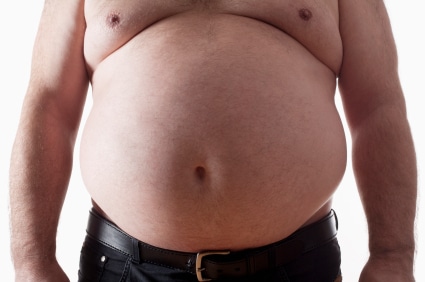 Why You Can’t Lose Weight
Why You Can’t Lose Weight
“Hey doc, I’ve been eating healthy and exercising 4-5 days a week and I still can’t lose weight.” That’s a comment I hear nearly every day from patients. It takes me more than just a few minutes to explain why they can’t lose weight. Are you one of those individuals who has tried everything and still can’t lose weight? If so, then this article might help you understand why weight loss has been a struggle for you.
When I delve into the eating and exercise programs in detail with these individuals who struggle to lose weight there are two things I typically find. One, most individuals are consuming more sugar or high glycemic carbohydrates in their diet than they think and are inadvertently/unknowingly sabotaging their efforts. Sugar is hidden in nearly any food found in a bag, box, can, or jar.
And, it doesn’t take much to sabotage yourself. For example, a 250-pound man would have to walk up 20 flights of stairs to burn the amount of calories in just one slice of white bread. If you are motivated, you eat the bread and walk the stairs. If you are smart you just walk the stairs. Someone who weighs less would have to walk even more than 20 flights of stairs to burn those unnecessary calories. So there are usually mistakes being made with the diet. You must eat clean.
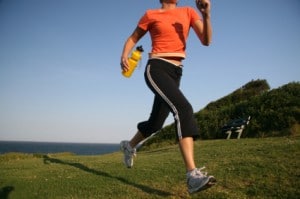 Secondly, they are not performing the best exercises to lose body fat. They typically are only doing aerobic exercise which is among the worst forms of exercise for weight loss but it is great for improving cardiovascular performance and increasing longevity. Yes, you read that properly – aerobics is not the best for weight loss but certainly better than doing nothing.
Secondly, they are not performing the best exercises to lose body fat. They typically are only doing aerobic exercise which is among the worst forms of exercise for weight loss but it is great for improving cardiovascular performance and increasing longevity. Yes, you read that properly – aerobics is not the best for weight loss but certainly better than doing nothing.
When we talk about weight loss we are talking about fat loss. The example of eating a slice of bread and walking 20 flights of stairs shows you how ineffective exercise is at burning calories. Yet, you must exercise but for different reasons than you might think, and you must exercise differently than you might be doing.
When it comes to weight loss the reason you exercise is not so much to burn calories during exercise but to burn more calories when you are not exercising – which happens to be most of the time. The purpose of exercise when it comes to weight loss is to improve metabolism for all 24 hours in a day not just for the 30 to 60 minutes of exercise time.
Weight loss is complicated and we have discussed on several occasions in various ways the importance of low glycemic eating, exercise, and maintaining optimal hormone levels to maintain lean body mass while losing body fat. And, all of that is important. But, here’s a key frequently ignored – weight loss is easier if you increase your metabolism.
To lose body fat and keep it off you must build and maintain lean body mass. You increase your metabolism by increasing your lean body mass.
When it comes to weight loss sugar is your enemy, but muscle is your friend.
We will focus on the importance of muscle for the remainder of this article.
Metabolic Rate and Muscle Mass
Every decade of life our basal or resting metabolic rate declines approximately 50 calories per day with each passing decade. Resting metabolic rate (RMR) is your metabolism just to “exist” and does not take into account your activity level. Resting metabolic rate is determined by your genetics and your lean body or muscle mass. We lose 3% to 8% of our muscle mass per decade after age 30 so between ages 20 and 90 we end up losing 50% of our lean body or muscle mass. Muscle mass is affected by our activity level and our sex hormones.
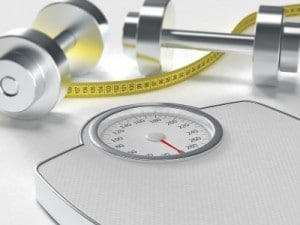 For example, a 30-year-old who has a resting metabolic rate of 1,666 calories per day will have an RMR at age 40 of 1,617 calories and age 50 an RMR of 1,568 calories. The decline in metabolism is even higher when you take into account activity level.
For example, a 30-year-old who has a resting metabolic rate of 1,666 calories per day will have an RMR at age 40 of 1,617 calories and age 50 an RMR of 1,568 calories. The decline in metabolism is even higher when you take into account activity level.
When you take into account activity level the decline is 60 calories per day per decade for someone who engages in low activity, 76 calories per day for someone who engages in moderate activity, and 93 calories per day for someone who engages in very high activity.
See the table below.
How Age and Activity Affect Metabolic Rate
The below table shows the decline in the daily calories burned each decade at rest and with various intensities of activity. Keep in mind that in reality there is a subtle decline in metabolism from year to year.
Though height and weight factor into metabolic rate the table below holds those factors constant which may or may not be the case in reality. As an example, the resting metabolic rate will decrease 49 calories per day per decade for a 6′ 0″ male age 50 weighing 200 pounds compared to a 6’0″ inch male age 40 weighing 200 pounds. And, the same is true for a 5’4 female age 40 weighing 130 pounds compared to a 5’4″ female age 30 weighing 130 pounds.
How to read the table. A 40-year-old has a resting metabolic rate that is 49 calories lower per day than he/she did at age 30. The same person who has a high activity level and has maintained that activity level between ages 30 and 40 has a metabolic rate (rest and activity) that is 85 calories less than he/she did at age 30. Because you have less muscle as you age you burn fewer calories during exercise than you did when you were younger and that decline is greater at higher intensities of activity.
| Resting | Low Activity | Light Activity | Moderate Activity | High Activity | Very High Activity |
| 49 calories | 59 calories | 68 calories | 76 calories | 85 calories | 93 calories |
* information in table determined using BMR app.
Take that 49 to 93 calories per day and multiply by 365 days in a year and you get a decline of 17,886 calories to 33,945 calories per year per decade. Divide that by 3,500 calories in a pound and you get 5.1 to 9.7 pounds of weight gain per decade. Have you noticed that many people gain about 5 to 10 pounds every decade after age 30 even though their dietary and exercise habits may not have changed much to explain the gain in weight?
Keep in mind each year metabolism is slowing down by one-tenth of the numbers shown in the table. Let’s round the 49 up to 50 calories a day. So at rest a 40-year-old burns 5 calories less a day than a 39-year-old, but 10 fewer calories per day than a 38-year-old, and 15 calories less a day than a 37-year-old, and so on.
*In an upcoming article we will discuss that even though we are taught that there are 3,500 calories in a pound the science surrounding that “fact” is not solid. Despite that, it does not diminish the reality that metabolism declines with aging because of a loss of muscle mass.
Why Metabolism is Affected by Lean Body Mass
Why does losing muscle mass affect metabolism? It’s pretty simple. A pound of muscle burns 6 to 10 calories per day at rest. A pound fat of burns 2 calories per day.
By simply adding 10 pounds of muscle mass you will burn 60 to 100 additional calories a day offsetting, at least partially, the decline in metabolism that occurs from the loss of muscle mass “due to aging”. This does not take into account the extra calories necessary to repair muscle micro-traumatized from strength training or the calories burned when strength training.
This is just the increase in resting metabolic rate. So the more muscle you have the more calories you burn even when not exercising – which is most of the time.
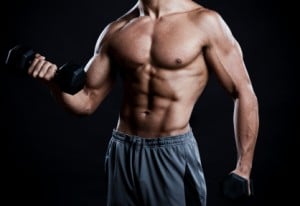 There’s more great news. A pound of fat takes up 2 to 3 times as much volume as a pound of muscle as fat is less dense. So if you gain 10 pounds of muscle and lose 10 pounds of fat your weight has not changed, but your percent body fat has decreased more so than it would if you simply lost 10 pounds of fat.
There’s more great news. A pound of fat takes up 2 to 3 times as much volume as a pound of muscle as fat is less dense. So if you gain 10 pounds of muscle and lose 10 pounds of fat your weight has not changed, but your percent body fat has decreased more so than it would if you simply lost 10 pounds of fat.
Better yet you will look leaner appearing 10 to 20 pounds lighter even though your weight has not changed in that scenario. Plus, you will be stronger and have less inflammation as fat is very inflammatory. To see images comparing the volume of 5 pounds of fat to 5 pounds of muscle click here.
Therefore, focus more on your body composition than your body weight. Body composition is more meaningful. We believe DEXA is the best way to determine body composition because it allows for direct measurement of lean body mass.
How to Increase Lean Body Mass
Why do we lose muscle? First, our activity level typically declines as we age, and with that comes a loss of a certain amount of muscle mass. That muscle loss is preventable. The second main reason is a loss of anabolic hormones that come with aging namely testosterone, growth hormone, and DHEA. While the decline in these hormones is not preventable, all these hormones can be replaced to youthful 30-year-old levels.
The point is that between anabolic hormone replacement and muscle-building exercises, much of the lean body mass lost with aging can be prevented. And, that means a healthy weight can be maintained throughout the years.
How do you build muscle? Strength training and high-intensity interval training coupled with a low glycemic diet (to prevent gain of fat weight) containing enough protein to build muscle.
Building muscle requires enough sex hormones on board especially testosterone (men and women) which facilitates the building of muscle. This is true for women, too. Testosterone levels interestingly begin to decline around age 30 – the same age we begin losing muscle mass. It’s not coincidental.
A seven-year-old boy can lift weights and though he will get stronger, he will not gain much muscle mass because he is not making very much testosterone. The same is true for a 70-year-old male. Building muscle requires a certain amount of testosterone which varies from person to person. One major benefit of testosterone replacement in those deficient is the restoration of muscle mass and an increase in metabolism leading to fat loss.
Testosterone and growth hormone release are triggered during strength training but also high-intensity interval training. Thus, both lead to muscle mass development. Sprinters are a classic example of the effects of HIIT.
Sprinters have a lower body fat composition than endurance runners and they have more muscle even though they do not lift weights and most of them rarely run a total of more than a mile per day during their workouts. They sprint 100, 200, or 400 meters, rest, and then sprint again, but rarely exceeding a daily volume of a mile or more. They are leaner than endurance runners despite running less mileage because the training they do builds muscle.
Watch Out for Those Skinny Fat People
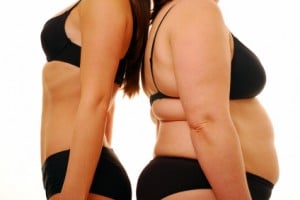 It seems about 10% of individuals can reasonably maintain their body weight throughout life. They are the ones who are naturally thin. These are the people most of us “hate.” Well maybe “jealous of” is more accurate. They seem to be able to eat anything they want and not gain weight even though some of them do little if any structured exercise.
It seems about 10% of individuals can reasonably maintain their body weight throughout life. They are the ones who are naturally thin. These are the people most of us “hate.” Well maybe “jealous of” is more accurate. They seem to be able to eat anything they want and not gain weight even though some of them do little if any structured exercise.
But, most of these individuals are skinny fat. They are not as healthy as they may appear. Their weight might appear healthy, but if body composition is performed on them you find that they too have lost muscle mass and have become fatter. They have just replaced lost muscle with an equal amount of body fat so their weight has not changed.
But, they get weaker with age, too. For the men, most of them will get a belly. And, the women begin to sag in the breasts, arms, buttocks, and legs and their clothes will fit differently despite little change in weight over the years. And, that’s why they are called “skinny fat.”
Strength Training Versus Aerobic Training
If you have limited time in the week to exercise, what type of exercise should you do? Most elect to focus on aerobics. But, they would be wiser to focus on resistance or strength training and high-intensity interval training (HIIT). First, strength training and HIIT protects our ability to manage our activities of daily living.
Rarely during the day and in your life will find yourself having to run 5 kilometers let alone 26.2 miles (marathon). But, you may have to sprint 30 yards to escape a burning house, jump down a flight of stairs, lift a heavy tree limb off someone caught in a storm, or simply open a heavy department store door, get off the toilet, or in and out of a bathtub. All of those are anaerobic activities and are addressed through strength training and HIIT.
Secondly, resistance training and HIIT facilitate muscle mass maintenance and fat loss better than aerobics. Depending on your size you burn 60 to 120 calories to cover a mile. You burn slightly more calories if you run the mile than walk it.
What does this mean? Well, you burn 0.72 calories per pound of body weight running. That means a 150-pound person burns 108 calories per mile run (it’s 0.56 calories per pound per mile walked). If a 150-pounder runs a marathon or 26.2 miles they will burn 2,830 calories or 8/10 of a pound. That’s it. Not exactly a great return for the effort.
And it will probably take 4-5 hours to complete the marathon if in decent shape and it’s going to take a couple of days to recover from it. There can be a better calorie burn per hour of exercise through strength training and HIIT. HIIT causes a higher EPOC, or afterburn than does aerobics. This means you burn more calories at rest. Plus, both of those activities facilitate muscle growth thus enabling you to even burn more calories 24 hours a day. Aerobic training does not provide this benefit.
Calculate Your Metabolic Rate
To accurately calculate your metabolic rate go to this article of ours. But, to ballpark your resting metabolic rate take your weight and multiply it by 10 if you are a female. If you are a male multiply your weight by 11. So a 120-pound female has a resting metabolic rate of 10 x 120 or 1,200 calories and a 175-pound male has a resting metabolic rate of 11 x 175 or 1,925 calories.
Do resistance/strength training and high-intensity interval training. Eat a low glycemic diet with ample protein. Keep your anabolic hormones optimal. And, you will lose body fat and gain lean body mass.
